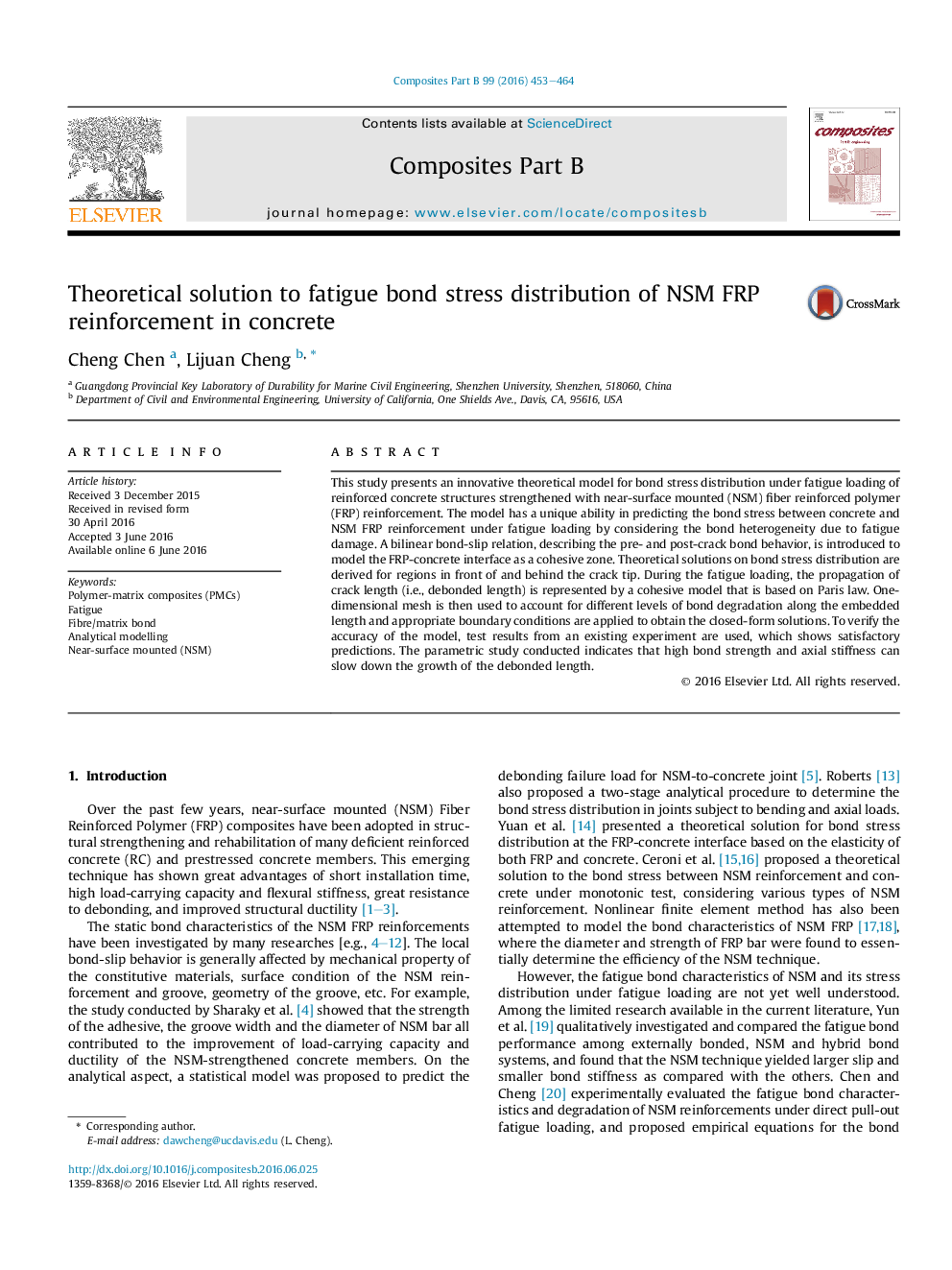| Article ID | Journal | Published Year | Pages | File Type |
|---|---|---|---|---|
| 7212505 | Composites Part B: Engineering | 2016 | 12 Pages |
Abstract
This study presents an innovative theoretical model for bond stress distribution under fatigue loading of reinforced concrete structures strengthened with near-surface mounted (NSM) fiber reinforced polymer (FRP) reinforcement. The model has a unique ability in predicting the bond stress between concrete and NSM FRP reinforcement under fatigue loading by considering the bond heterogeneity due to fatigue damage. A bilinear bond-slip relation, describing the pre- and post-crack bond behavior, is introduced to model the FRP-concrete interface as a cohesive zone. Theoretical solutions on bond stress distribution are derived for regions in front of and behind the crack tip. During the fatigue loading, the propagation of crack length (i.e., debonded length) is represented by a cohesive model that is based on Paris law. One-dimensional mesh is then used to account for different levels of bond degradation along the embedded length and appropriate boundary conditions are applied to obtain the closed-form solutions. To verify the accuracy of the model, test results from an existing experiment are used, which shows satisfactory predictions. The parametric study conducted indicates that high bond strength and axial stiffness can slow down the growth of the debonded length.
Keywords
Related Topics
Physical Sciences and Engineering
Engineering
Engineering (General)
Authors
Cheng Chen, Lijuan Cheng,
